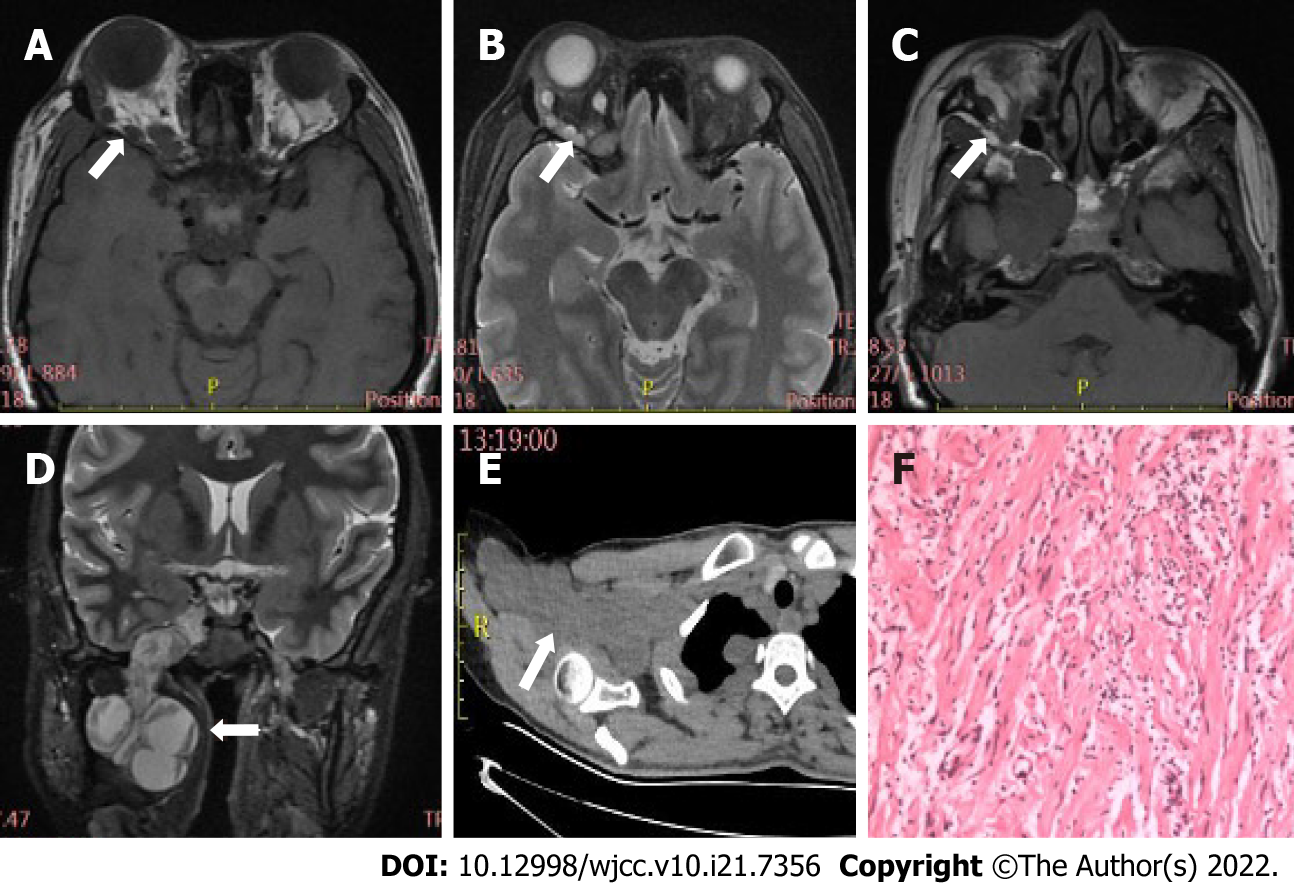Copyright
©The Author(s) 2022.
World J Clin Cases. Jul 26, 2022; 10(21): 7356-7364
Published online Jul 26, 2022. doi: 10.12998/wjcc.v10.i21.7356
Published online Jul 26, 2022. doi: 10.12998/wjcc.v10.i21.7356
Figure 3 Case 3, 37-year-old female, plexiform neurofibroma.
A and B: Magnetic resonance imaging plain scan showed nodules, with a diameter of 4-5 mm, had multiple slightly long T1 and long/slightly long T2 signals in the right orbit (indicated by the arrow); C and D: The focus grew into the brain through the supraorbital and inferior fissure (indicated by the arrow). An irregular mass, which was mainly cystic (long T1, T2 signals), with "V" shaped nerve fibers (equal T1 and T2 signals), could be seen in the right parasellar, pterygopalatine as well as infratemporal fossa; E: Plain chest computed tomography (CT) scan indicated multiple irregular and slightly low-density nodules, together with masses, located in the right brachial plexus distribution and the subpleural region, having an average CT value of approximately 36 Hu; F: Microscopically, nerve fiber cells with mucus around them could be seen.
- Citation: Dai M, Wang T, Wang JM, Fang LP, Zhao Y, Thakur A, Wang D. Imaging characteristics of orbital peripheral nerve sheath tumors: Analysis of 34 cases. World J Clin Cases 2022; 10(21): 7356-7364
- URL: https://www.wjgnet.com/2307-8960/full/v10/i21/7356.htm
- DOI: https://dx.doi.org/10.12998/wjcc.v10.i21.7356









